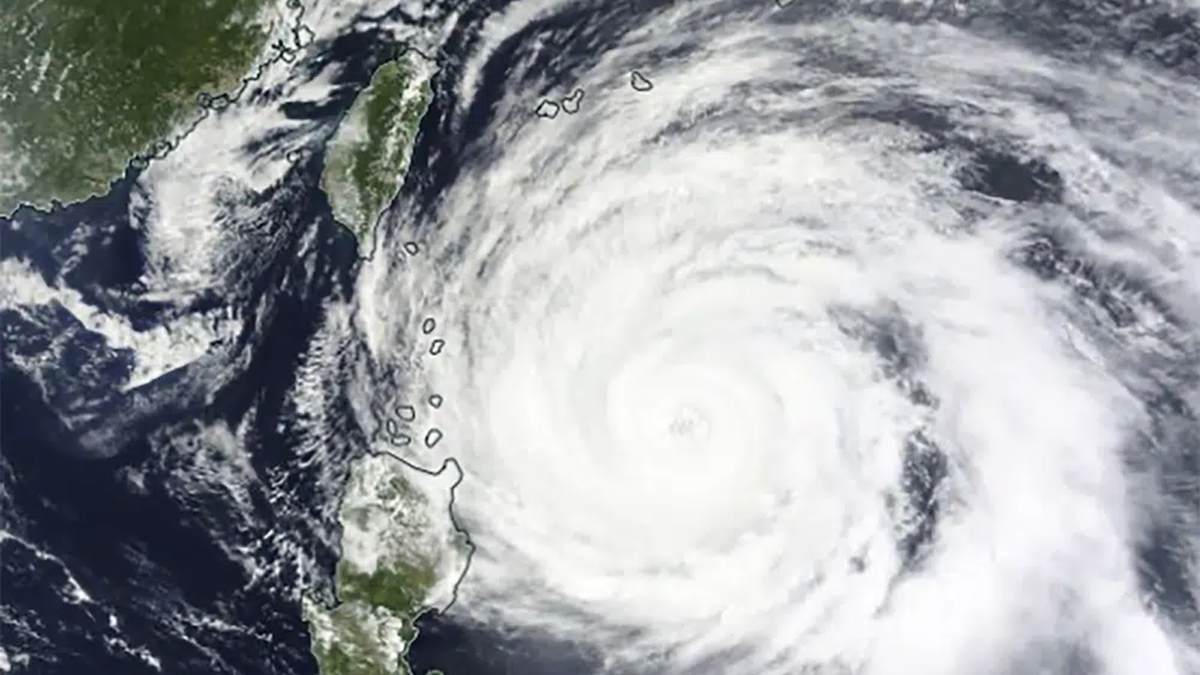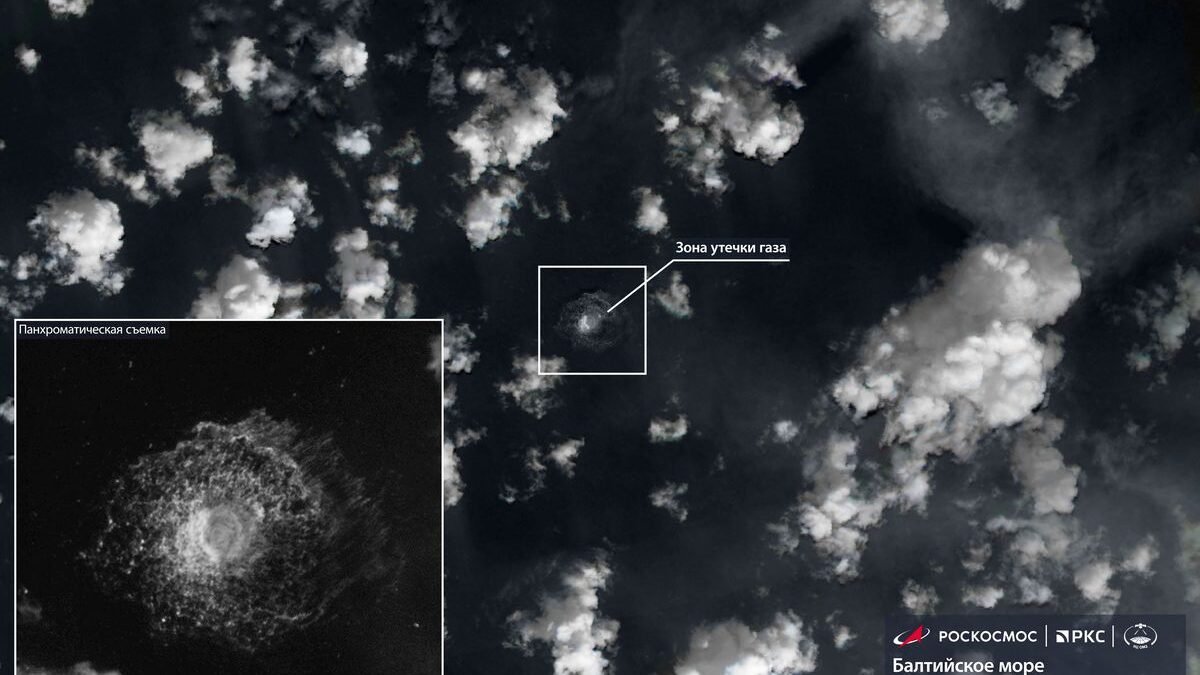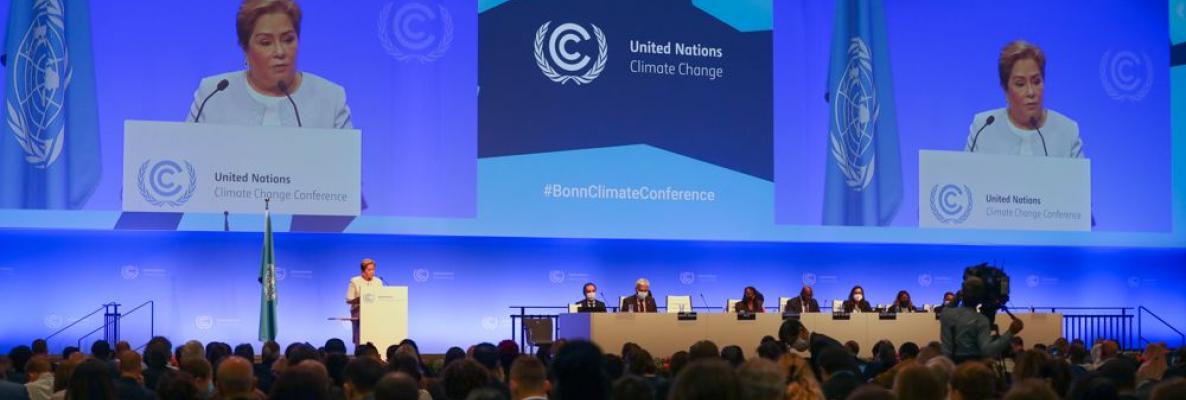Adding 8 trillion tons of artificial snow to the West Antarctic Ice Sheet could stop it from collapsing – “The fundamental trade-off is whether we as humanity want to sacrifice Antarctica to save the currently inhabited coastal regions”
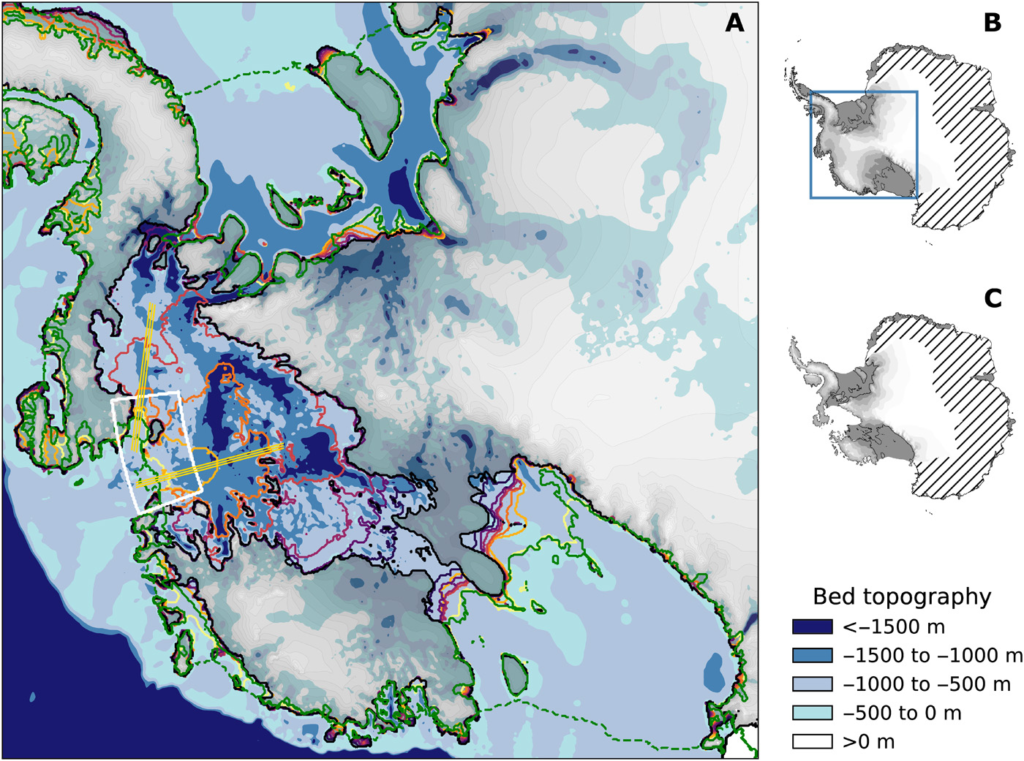
By Katherine J. Wu
17 July 2019
(PBS) – Gird your loins, humans: The time has come to turn part of the South Pole into our own giant snow globe.
Or has it?
In a study published today in the journal Science Advances, a team of German researchers suggests that dumping 8 trillion tons of artificial snow onto the West Antarctic Ice Sheet could prevent its collapse. This would, in turn, stave off devastating sea level rises due to continued glacial melt.
The faux frost intervention would come in the form of human-made blizzards, distributed by snow cannons pumped full of frozen, desalinated ocean water—a feat of engineering that’s never been accomplished before. It could also mean risking many of the fragile ecosystems the region supports.
Let’s be clear: The idea is risky, to say the least, and no one—including the researchers themselves—is planning to act on it just yet. But extreme circumstances call for extreme (hypothetical) solutions, the researchers say. Implementing such a strategy could mean saving coastal cities worldwide from inevitable inundation as sea levels climb.
“[In the long term], global metropolises from New York to Shanghai … will be below sea level if nothing is done,” study author Anders Levermann, a physicist at the Potsdam Institute for Climate Impact Research and Columbia University, said in a statement.
That’s a sobering prospect—but also, perhaps, a very real one. As things stand, West Antarctica’s glaciers aren’t long for this world. And if these majestic ice sheets collapse completely, this loss alone could raise sea levels by more than 10 feet. […]
The fundamental trade-off is whether we as humanity want to sacrifice Antarctica to save the currently inhabited coastal regions and the cultural heritage that we have built and are building on our shores. It is about global metropolises, from New York to Shanghai, which in the long term will be below sea level if nothing is done.
Anders Levermann, physicist at the Potsdam Institute for Climate Impact Research
Engineering needs alone could be enough to nip this idea in the bud, Beijing Normal University’s John Moore, who was not involved in the study, told Hannah Osborne at Newsweek. “Many people can think of solutions that might sound plausible, but which require feats of engineering or consumption of resources that are untenable,” he said. “I think this is one of them.”
Even if the technological hurdles could be overcome, deploying these snow cannons could also pose a serious threat to marine life that would inevitably suffer the effects of disruptions from machines, as well as the literal drain on their watery habitat.
Levermann fully owns up to the devastating effects the strategy would have on the ecosystem, as it would transform much of Antarctica into “an industrial compound,” he told Osborne. “No one wants that. But [the ecosystem] would be altered anyway by the collapse of the ice sheet.”
What’s more, their model assumed that the current climate and, in turn, global temperatures, will hold steady over the next decade—an unlikely scenario.
And that’s all assuming the process would work. Such a large-scale glacial rejiggering could still backfire. Researchers don’t fully understand the dynamics of ice sheets, and artificially thickened ice might actually be more prone to break off and melt into the sea, Richard Alley, a glaciologist at Pennsylvania State University who was not involved in the study, told Richard A. Lovett at Cosmos. [more]
![Time series of ice loss from the Amundsen Sea sector for the cases of unperturbed destabilization (black) and mass deposition (colored) of the West Antarctic Ice Sheet (WAIS). (A) Changes in sea level relevant ice volume. (B) Rate of ice loss. Colors of the curves indicate surplus (red) or lack (blue) in added mass with respect to stabilization threshold, Mc. Shaded areas indicate the ranges of observed present-day rates of ice loss from the WAIS [purple, 66th percentile with median dashed; (2)] and the Amundsen Sea sector [gray; (1)]. Continuation of these trends into the future is illustrative, as the drivers of these trends are still disputed. SLE, sea level equivalent. Graphic: Feldmann, et al., 2019 / Science Advances](https://desdemonadespair.net/wp-content/uploads/2019/07/Time-series-of-ice-loss-from-the-Amundsen-Sea-sector-for-the-cases-of-unperturbed-destabilization-and-mass-deposition-Feldmann-et-al-2019-Science-Advances-1024x975.png)
Sea level rise: West Antarctic ice collapse may be prevented by snowing ocean water onto it
18 July 2019 – The ice sheet covering West Antarctica is at risk of sliding off into the ocean. While further ice-sheet destabilisation in other parts of the continent may be limited by a reduction of greenhouse gas emissions, the slow, yet inexorable loss of West Antarctic ice is likely to continue even after climate warming is stabilised. A collapse might take hundreds of years but will raise sea levels worldwide by more than three meters. A team of researchers from the Potsdam Institute for Climate Impact Research (PIK) is now scrutinising a daring way of stabilising the ice sheet: Generating trillions of tons of additional snowfall by pumping ocean water onto the glaciers and distributing it with snow canons. This would mean unprecedented engineering efforts and a substantial environmental hazard in one of the world’s last pristine regions – to prevent long-term sea level rise for some of the world’s most densely populated areas along coastlines from the US to China.
The apparent absurdity of the endeavour to let it snow in Antarctica to stop an ice instability reflects the breath-taking dimension of the sea-level problem.
Anders Levermann, physicist at the Potsdam Institute for Climate Impact Research
“The fundamental trade-off is whether we as humanity want to sacrifice Antarctica to save the currently inhabited coastal regions and the cultural heritage that we have built and are building on our shores. It is about global metropolises, from New York to Shanghai, which in the long term will be below sea level if nothing is done,” explains Anders Levermann, physicist at the Potsdam Institute for Climate Impact Research (PIK) and Columbia University and one of the authors of the study. “The West Antarctic Ice Sheet is one of the tipping elements in our climate system. Ice loss is accelerating and might not stop until the West Antarctic ice sheet is practically gone.”
Unprecedented measures to stabilise the ice sheet
Warm ocean currents have reached the Amundsen Sea Sector of West Antarctica – a region comprising several glaciers that are prone to instability due to their topographic configuration. Underwater melting of these glaciers triggered their speed-up and retreat. This is already now responsible for the largest ice loss from the continent and provides an accelerating contribution to global sea level rise. In their study, the researchers employ computer simulations to project the dynamic ice loss into the future. They confirm earlier studies suggesting that even strong reduction of greenhouse gas emissions may not prevent the collapse of the West Antarctic ice sheet.
“So we investigated what could stop a potential collapse in our simulations and increased the snowfall in the destabilised region far beyond observations,” says PIK co-author Johannes Feldmann. “In fact, we find that an awful lot of snow can indeed push the ice sheet back towards a stable regime and stop the instability. In practice, this could be realized by an enormous redisposition of water masses – pumped out of the ocean and snowed onto the ice sheet at a rate of several hundred billion tons per year over a few decades.”
A tremendous trade-off between hazards and hopes
“We are fully aware of the disruptive character such an intervention would have,” adds Feldmann. Uplifting, desalinating and heating the ocean water as well as powering the snow canons would require an amount of electric power in the order of several ten thousand high-end wind turbines. “Putting up such a wind farm and the further infrastructure in the Amundsen Sea and the massive extraction of ocean water itself would essentially mean losing a unique natural reserve. Further, the harsh Antarctic climate makes the technical challenges difficult to anticipate and hard to handle while the potential hazardous impacts to the region are likely to be devastating.” Thus the risks and costs of such an unprecedented endeavour must be weighted very carefully against its potential benefits. “Also, our study does not consider future man-made global warming. Hence this gigantic endeavour only makes sense if the Paris Climate Agreement is kept and carbon emissions are reduced fast and unequivocally.”
“The apparent absurdity of the endeavour to let it snow in Antarctica to stop an ice instability reflects the breath-taking dimension of the sea-level problem,” concludes Levermann. “Yet as scientists we feel it is our duty to inform society about each and every potential option to counter the problems ahead. As unbelievable as it might seem: In order to prevent an unprecedented risk, humankind might have to make an unprecedented effort, too.”
Contact
- PIK press office, phone: +49 331 288 25 07, email: press@pik-potsdam.de, Twitter: @PIK_Climate, www.pik-potsdam.de
Sea level rise: West Antarctic ice collapse may be prevented by snowing ocean water onto it
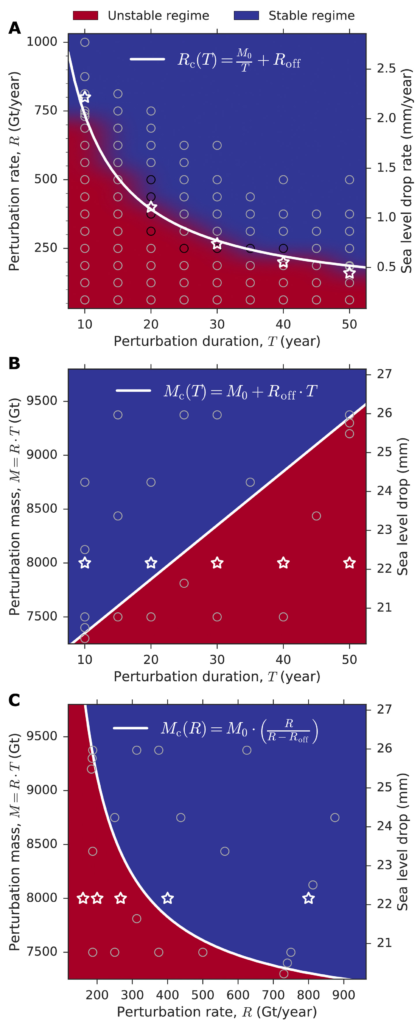
Stabilizing the West Antarctic Ice Sheet by surface mass deposition
ABSTRACT: There is evidence that a self-sustaining ice discharge from the West Antarctic Ice Sheet (WAIS) has started, potentially leading to its disintegration. The associated sea level rise of more than 3m would pose a serious challenge to highly populated areas including metropolises such as Calcutta, Shanghai, New York City, and Tokyo. Here, we show that the WAIS may be stabilized through mass deposition in coastal regions around Pine Island and Thwaites glaciers. In our numerical simulations, a minimum of 7400 Gt of additional snowfall stabilizes the flow if applied over a short period of 10 years onto the region (−2 mm year−1 sea level equivalent). Mass deposition at a lower rate increases the intervention time and the required total amount of snow. We find that the precise conditions of such an operation are crucial, and potential benefits need to be weighed against environmental hazards, future risks, and enormous technical challenges.
Stabilizing the West Antarctic Ice Sheet by surface mass deposition
